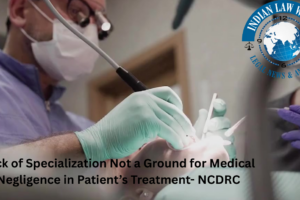 Neighborhood disputes, property trespass is not uncommon to disturb harmony and peace in society. Tort can be defined as an act conducted by one person towards another person which causes harm to the other person causing either injury to the other person or harm. The intensity of tort is further determined by whether the act was intentionally caused in order to inflict act on the other person or whether the person acted in a negligent manner which eventually caused harm to the other person. In certain scenario even strict liability can be fixed. The Supreme Court of India has through its numerous landmark judgements helped shaped the law of Torts in India. It has also been observed by the Hon’ble court a number of times for a need to codify the law of Tort. The principles of Torts have also been applied in newer legislation’s such as the Environment Protection Act, 1986, The Consumer Protection Act 1986, The Human Rights Protection Act 1988, The Motor Vehicles Act, 1988. However, it is still observed that the branch of Torts as a whole is still growing and developing in India as compared to the development of Torts in countries like UK and USA.
Neighborhood disputes, property trespass is not uncommon to disturb harmony and peace in society. Tort can be defined as an act conducted by one person towards another person which causes harm to the other person causing either injury to the other person or harm. The intensity of tort is further determined by whether the act was intentionally caused in order to inflict act on the other person or whether the person acted in a negligent manner which eventually caused harm to the other person. In certain scenario even strict liability can be fixed. The Supreme Court of India has through its numerous landmark judgements helped shaped the law of Torts in India. It has also been observed by the Hon’ble court a number of times for a need to codify the law of Tort. The principles of Torts have also been applied in newer legislation’s such as the Environment Protection Act, 1986, The Consumer Protection Act 1986, The Human Rights Protection Act 1988, The Motor Vehicles Act, 1988. However, it is still observed that the branch of Torts as a whole is still growing and developing in India as compared to the development of Torts in countries like UK and USA.
Law of Torts in India
The Indian law of tort is shaped after the principles of tort law in UK. The cases of tort in India are tried in civil courts and the relief includes damages by way of monetary compensation or an order for injunction or restitution. The courts in India have often taken the stand that tort law is essential in India and in conducive for the growth and development of the society. The knowledge of torts and its use is not very popular among the general public, primarily because it is not codified. It is hence essential to highlight the basic principles and concepts of torts where a person can understand his rights and liabilities under the tort laws.
The term ‘Tort’ is French word equivalent of the English word ‘wrong’ and of the Roman law term ‘delict’. The word ‘tort’ is derived from the Latin term tortum to twist, and implies conduct which is twisted or tortuous. There is a well-distinction between a Contract and a Tort. A contract is founded upon consent: a tort is inflicted against or without consent. First, a tort is a violation of a right in rem, i.e. of a right vested in some determinate person, either personally or as a member of community, and available against the world at large: whereas a breach of contract is an infringement of a right in personam, i.e. of a right available only against some determinate person or body, and in which the community at large has concern. A tort is different from crime. The remedy in tort is provided in terms of liquidated damages.
Principles of Tort
- Compensation
- Concept of injury
- Burden of proof
- Vicarious liability
- Contributory negligence
- Joint & Several Liability in tort
- Self- defence

Law of Torts in United States
Tort law in the United States exists to redress damages caused an individual by the conduct of another that falls below a standard of care defined by civil courts. It is well defined branch of law practiced in US. The various types of torts are:
-
- Intentional
- Battery
- Assault
- False imprisonment
- Infliction of emotional distress
- Negligence
- Product liability
- Vicarious liability
- Defamation
- Premises liability
- Malicious prosecution
- Abuse of legal process
- Civil conspiracy
- Invasion of privacy
- Wrongful discharge from employment
- Intentional
 Tort as we know today has evolved and has grown tremendously in progressive countries such as the England, United States of America and to a certain extent in India. The question now arises whether the law of tort in India is necessary or whether the law of torts has been simply overlooked. In India context, the term tort has been in existence since pre-independence era. The Sanskrit word Jimha refers to in ancient Hindu law text in the sense of ‘tortious of fraudulent conduct’. The law of torts in India presently, is mainly based upon the English law of torts which itself is based on the principles of the common law of England.
Tort as we know today has evolved and has grown tremendously in progressive countries such as the England, United States of America and to a certain extent in India. The question now arises whether the law of tort in India is necessary or whether the law of torts has been simply overlooked. In India context, the term tort has been in existence since pre-independence era. The Sanskrit word Jimha refers to in ancient Hindu law text in the sense of ‘tortious of fraudulent conduct’. The law of torts in India presently, is mainly based upon the English law of torts which itself is based on the principles of the common law of England.
How does law of torts empower and better help in restoring law and order?
One person’s duty is another person’s right. Each Indian citizen has the right to freedom of movement, and it is our responsibility to ensure that this right is exercised properly otherwise the right will be abused, defeating the purpose of the right. Similarly, the right to the enjoyment of one’s property entails a duty of care towards the surrounding environment and people, which is why the tort of strict liability was established to protect such rights and to enforce such duties.
“Truly speaking the entire law of torts is founded and structured on morality. Therefore, it would be primitive to close strictly or close finally the ever expanding and growing horizon of tortious liability. Even for social development, orderly growth of the society and cultural the liberal approach to tortious liability by court would be conducive.”- Sahai. J.

The case of Oleum gas leak
M.C. Mehta v. Union of India arose as a result of an oleum gas leak at the Shriram Food and Fertilisers Ltd. complex in Delhi. The case started when a social activist lawyer, who originally petitioned for the closure of Shriram Industries on the grounds that it manufactured hazardous substances and was located in a densely populated area of Delhi. On 4th and 6th December 1985, while the petition was pending, oleum (O3S-Fuming Sulphuric acid) gas escaped due to a leak in a particular area of Delhi, killing an advocate Practising in the Tis Hazari Court. Many others were also affected, causing widespread distress.
The Apex Court then established the rule of absolute liability, under which liability would arise for the damages caused without regard to any of the exceptions that come with the principle of strict liability. The Supreme Court held that, despite its stringency, the strict liability rule was insufficient in modern times due to scientific advancements making modern industries even more dangerous and hazardous.
We gained a new principle of “absolute liability” for owners of hazardous substance industries as a result of P.N. Bhagwati’s judgments.
The Bhopal gas tragedy case
The tragedy occurred in 1984, just prior to the oleum gas leak. Between the terrifying nights of 2-3 December 1984 in Bhopal, Madhya Pradesh, it was discovered that more than 27 tonnes of methyl isocyanate and other poisonous deadly gases had leaked, transforming the city into a gas chamber. The methyl isocyanate (MIC) gas was released from a Union Carbide India Ltd. (UCIL) pesticide manufacturing plant.
There were allegations that the accident occurred because the majority of safety-measure systems were inoperable and those that were were unable to avert the disaster. as none of the plant’s six safety systems were operational, and Union Carbide’s documents demonstrate that the company designed the plant using unproven’ and untested’ technology and cut corners on safety and maintenance to save money. The toxic gas release engulfed the entire city, killing thousands of people and injuring nearly 1.5 lakh. Its devastating effects were passed onto future generations. Individuals were afflicted with a variety of ocular, respiratory, gastrointestinal, reproductive, and neurological conditions. Pregnant women who underwent abortions, had premature deliveries, and gave birth to infants with fatal abnormalities were among the injured, and the danger to their health is still present.
The Indian Government filed a case against UCIL in the United States Supreme Court in February 1985, and the case was transferred to India in 1986 on the grounds of forum non convenience. During that time period, the 1985 Bhopal Gas Leak Disaster (Processing of Claims) Act empowered the Central Government to act as the sole representative of the victims to expedite justice in light of the high volume of petitions filed. However, rather than following the law, the government chose an out-of-court settlement with UCIL for a full and final settlement of $740 million, as well as limiting UCIL’s liability for all civil and criminal claims. This settlement was widely criticised, and a number of review petitions were filed with the Supreme Court challenging the settlement order’s validity.
The Vizag gas leak case
The case occurred when on May 7, 2020, a polymer factory owned by LG Polymers India Private Limited released Styrene Gas, killing eleven persons and injuring thousands more. The leak was alleged to be the result of the company’s failure to meet the compliances entailed in the ‘Manufacture, Storage, and Import of Hazardous Chemical Rules 1989,’ which in effect requires a company to maintain certain emergency plans for preventing onsite and offsite damages to the plant and its surroundings. After inspecting and analysing the location in issue, the National Green Tribunal (NGT) took Suo moto cognizance of the occurrence and formed a five-member committee to submit a report on the event. According to the tribunal’s interim order, the industry was only required to obey the consequences of the Polluter Pays Principle and the strict liability principle. And in the final judgment, it was held that the relevant business needs to pay Rs. 50crore in damages, the NGT ruled that the company is only strictly responsible for the harm it caused.

All types of tort are in plentiful occurrence in India; but these cases are rarely reported; first, they are settled out of court and secondly many cases are decided in lower courts and for want of records of these decisions we infer that there is scarcity of tort litigation in India. Many of these cases are finally determined in lower court and do not reach the High Courts level. Among the limited number which go to the High Court only some are actually reported. The tort law needs to be codified.As tort law is a relatively young area of law in India, apart from referring to local judicial precedents, courts have readily referred to case law from other common law jurisdictions, such as UK, Australia, and Canada. However, incidents of trespass, invasion of privacy etc are source of nuisance and is cause of disturbance of peace.
Photo by Nicola Carter on Unsplash














Add Comment